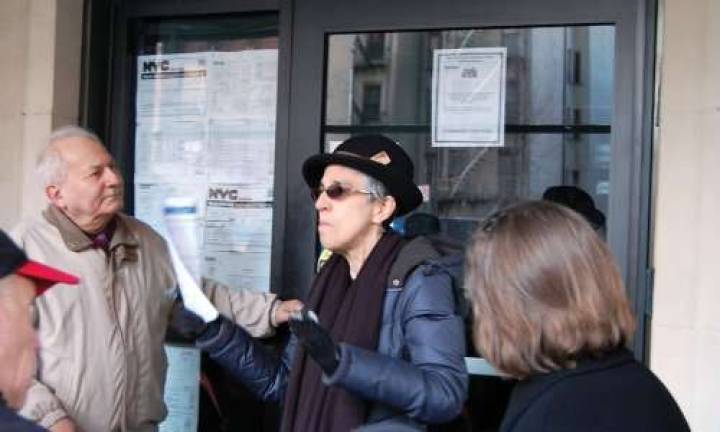Buyer for Bialystoker Home Rumored Close

Preservationists, residents scramble to secure landmark designation
By Alan Krawitz
Built in 1929, the historic Bialystoker Center for Rehabilitation and Nursing served residents of the Lower East Side for 80 years before it was put up for sale and ultimately shuttered late last year. The center's nonprofit owners, Bialystoker Center and Bikur Cholim Inc., claim that mounting debt brought on by a combination of factors has forced them to sell the site in order to cover their financial obligations.
But now, local residents and preservationists are racing against time to get the 10-story structure, located at 228 Broadway, designated as a landmark to protect the site against development into residential housing.
"We got a tip that the sale of the Center may happen as early as this week," said Joyce Mendelsohn, a founding member of the group Friends of the Bialystoker Home, a preservation group formed last year when the home's closure was revealed. "We're trying very hard to get the Center on the calendar of the Landmarks Preservation Commission [LPC]," Mendelsohn said by phone this week.
Getting a spot on the LPC calendar is the first step in the landmark designation process. If successful, it would freeze any work being done on the building for 40 days. This past Sunday, Mendelsohn hosted a panel discussion at the nearby Seward Park Cooperative on the past, present and future of the Bialystoker Home that was attended by more than 75 local residents, as well as preservationists and historians alike.
Support for preservation of the Bialystoker Home is substantial. So far, 14 LES organizations, including the Historic Districts Council, Bowery Alliance of Neighbors, Lower East Side Preservation Initiative and the Art Deco Society of New York, have joined the Friends of the Bialystoker Home. Panel speakers discussed both the unique architectural elements of the building, such as its Art Deco style with an emphasis on verticality and use of setbacks and medallions representing the 12 tribes of Israel, as well as the structure's important role in the settling and assimilation of Jews into the area from Bialystok, Poland.
Suzanne Wasserman, a filmmaker and director of the Gotham Center for NYC History/CUNY Graduate Center, described the LES as an unforgiving place in the 1930s, when the Bialystoker Home first opened. "One in three New Yorkers were unemployed and there were long bread lines no matter where you went," Wasserman said.
Wasserman showed a photo of an unemployed LES man wearing a bread board that read, "I want work now!!"
"The majority of Bialystokers were poor immigrants," said Elissa Sampson, a longtime LES resident and Ph.D. candidate in urban geography at the University of North Carolina.
She called the lettering at the entrance to the home, English letters written out as Yiddish script, an "amazing statement on immigration and assimilation." The Yiddish became English and the immigrants became Americans, Sampson explained.
Daniel White, a spokesperson for the Bialystoker Center, said that landmark designation would only hurt the site's chances for redevelopment sufficient to cover the center's financial obligations. Those obligations include payment of pensions and benefits to members of 1199SEIU as well as back taxes owed on the property.
"The goal here is to redevelop the site so the center can pay off its debts," White said.
However, as of this moment, local residents and the center seem to have different agendas.
"They want maximum profit and we want to save the building," Mendelsohn said.
She added that as of Monday, supporters of the Bialystoker Home had delivered 57 postcards and 12 letters to the LPC favoring landmark designation for the site. And while Mendelsohn acknowledges that the building will be less valuable once it's landmarked, she believes the Center can still recoup its money.
"There are still other developers out there that are interested in the property," she said.